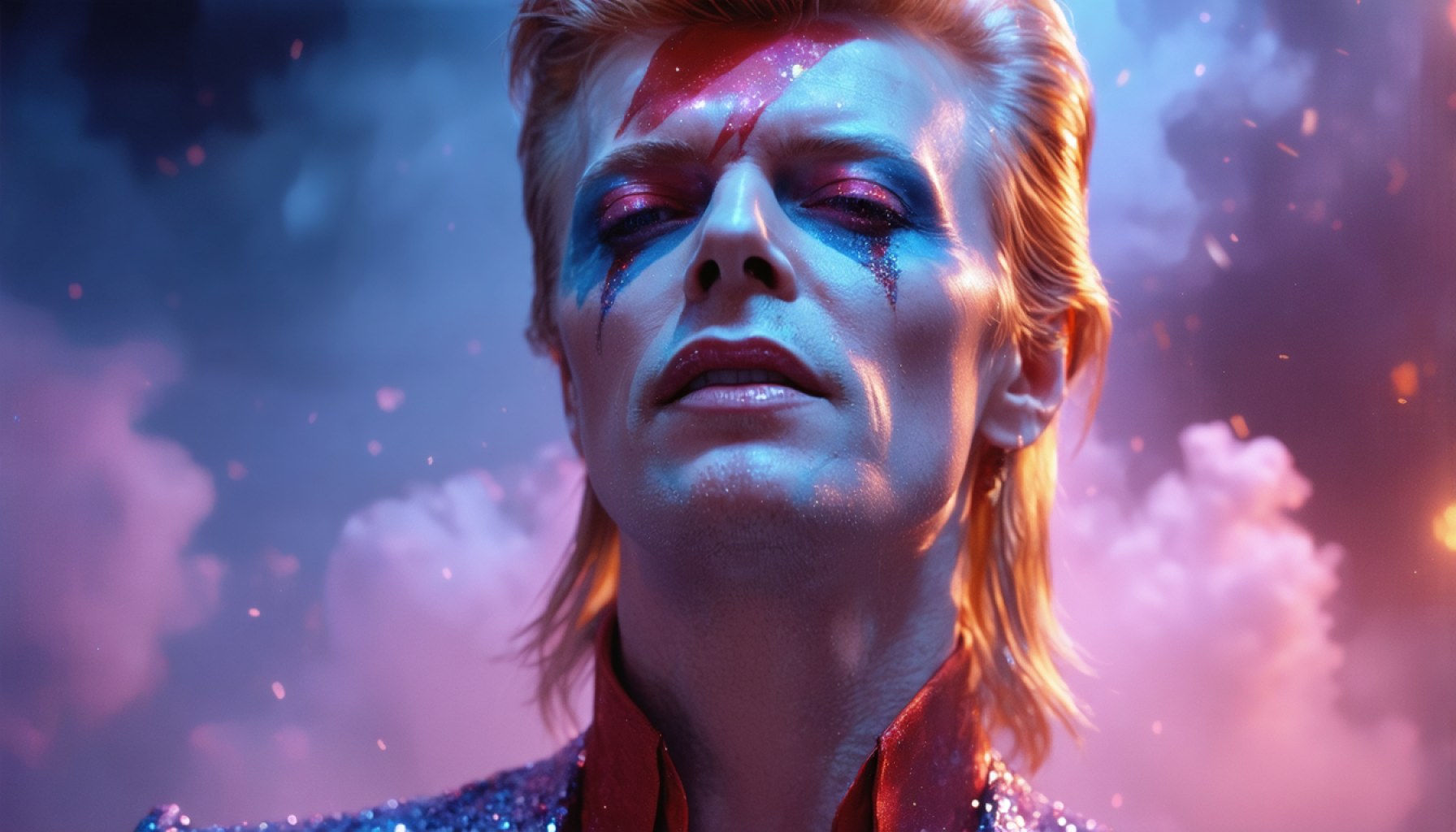- David Bowie redefined masculinity in the 1970s with his innovative alter egos and boundary-breaking artistry.
- Bowie’s flamboyant fashion choices, such as jumpsuits and red plastic boots, challenged traditional male norms.
- He courageously addressed his sexual orientation, paving the way for greater acceptance and self-expression among young men.
- The glam rock era, spearheaded by Bowie, celebrated individuality and creativity, mixing glitter with grit.
- Bowie’s legacy endures, inspiring authenticity and vulnerability through music, art, and personal expression.
- The takeaway: Art and personal truth are powerful allies in challenging and reshaping cultural conventions.
Every now and then, a figure emerges who doesn’t just follow trends but invents them. David Bowie, with his kaleidoscope of alter egos and daring artistry, reshaped the cultural landscape during the early 1970s. As The Secret Public suggests, Bowie didn’t just tiptoe across boundaries; he obliterated them, making space for a new kind of masculinity—one infused with glamor, fluidity, and edge.
Vivid scenes come alive as the book unfolds, each page a tapestry weaving together technicolor threads of creativity and courage. Bowie, with his electric stylings and avant-garde flair, became a beacon for the unconventional. Spurning ubiquitous jeans for jumpsuits and red plastic boots, he made every performance a pageant, dismantling the restrictive walls of what it meant to be a man at the time.
But it wasn’t just about the wardrobe. Bowie spoke out at a time when coming out was nearly unthinkable for a star. His admission of his sexual orientation was a seismic tremor that shook traditionalist foundations and allowed a generation of young men to embrace femininity without fear. The glam rock era was ablaze with glitter and grit, a theater where everything outrageous became possible.
Through music, art, and self-expression, Bowie and his contemporaries unfurled a new banner for masculinity—one that sanctioned vulnerability, encouraged authenticity, and celebrated queerness. Their legacy persists, reminding us that true strength and creativity often arise from breaking free of the mold. So, whether one is a Little Richard devotee or an Andy Warhol admirer, the lesson lingers: art and personal truth can—and should—go hand in hand.
Discover How David Bowie’s Legacy Continues to Resonate Across Generations
The Pioneering Impact of David Bowie on Music and Culture
David Bowie remains an iconic figure whose influence transcends the boundaries of music and fashion. With a fearless dedication to authenticity and self-expression, Bowie’s career in the early 1970s was characterized by his transformation into a cultural phenomenon. His innovations in glam rock encompassed a unique blend of artistry, pushing societal norms around gender and identity. Let’s delve deeper into various aspects of Bowie’s legacy and discover practical takeaways for creatives today.
Real-World Use Cases
1. Music Industry Innovation
Bowie’s fluidity in musical style set a benchmark for artists seeking to evolve beyond their debut breakthrough. He demonstrated that musicians could successfully reinvent themselves, adapting to the times while influencing trends. Contemporary musicians like Lady Gaga and Harry Styles have embraced this approach. By incorporating storytelling and theatrical elements into their performances, these artists pay homage to Bowie’s boundary-blurring impact.
2. Fashion and Identity
Bowie’s wardrobe choices were extensions of his artistic expression, advancing the concept of fashion as a tool for gender expression. Modern designers, such as Alessandro Michele of Gucci, draw inspiration from Bowie by challenging traditional gender norms in fashion. “Gender-neutral” has become a mainstream buzzword in the fashion industry, furthering dialogues on identity and self-expression.
Market Forecasts & Industry Trends
The ongoing interest in retro and vintage styles continues to drive the demand for nostalgia-infused fashion and music. The retro revival trend, fueled in part by Bowie’s lasting influence, underscores a yearning for the authenticity embedded in past eras. According to a report by Grand View Research, the global market for vintage clothing is expected to grow significantly, with Bowie-inspired designs being pivotal to fashion collections.
Controversies & Limitations
Bowie’s bold openness about his sexuality was groundbreaking, yet he sometimes faced criticism for his fluctuating public statements regarding his sexual orientation. Though viewed as a disruptor of norms, the 1970s media often scrutinized Bowie’s personal life, highlighting the societal limitations of acceptance during his time. Bowie’s experiences remind us of the oscillations between groundbreaking progress and societal reluctance—a pattern still observable in cultural dialogs today.
Pros & Cons of Bowie’s Approach
Pros:
– Innovative Artistry: Fostered creativity across multiple domains, encouraging artistic exploration.
– Influential Vision: Provided a role model for future generations in embracing authenticity.
– Cultural Impact: Altered perceptions of gender and identity, paving the way for more inclusive discussions.
Cons:
– Controversial Stances: Bowie’s shifting public statements sometimes confused fans and critics.
– Underrepresented stories: Some aspects of his influence on marginalized communities were overlooked during his early career.
Actionable Recommendations for Aspiring Creatives
1. Embrace Change: Like Bowie, be fearless in evolving your style or approach to your art over time. Creativity flourishes when risks are taken.
2. Find Your Voice: Authenticity connects most powerfully with audiences. Let personal truth guide your artistic endeavors.
3. Cultural Appreciation: Acknowledge the influences that guide your art and maintain a dialog with where these inspirations originate.
Bowie’s life showcases how art and identity can intersect to create lasting societal impacts. Today, individuals seeking to realize their creative potential can learn from his legacy, embracing both distinction and inclusivity. By doing so, they contribute to an evolving cultural narrative that celebrates diversity and genuine self-expression.
For more insights into cultural history, impactful icons, and more, visit Rolling Stone and Vogue.
